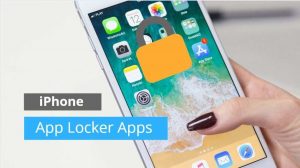Epost100’s Quick Answer to Change Font style on Instagram Bio and Posts
1. Connect to a strong and effective WiFi first in your iPhone device.
2. Settings App -> (iCloud Username ) -> iCloud
3. Choose iCloud Backup under the iCloud section.
4. Tap Back Up Now for the backup to start immediately. This will start the back and you can go about your business while the back up runs in the background.
To read a detailed answer as to How to backup iPhone to iCloud, read below.
iCloud backups are incredibly comfortable to perform. Backing up an iPhone device to iCloud can be achieved via the settings app on the iPhone device. You need to follow the below-mentioned 5 steps in order to perform a backup of your iPhone to iCloud.
Backing up your iPhone to iCloud generally means you will have a copy of all your essential data in the cloud as a back up. In case of damage or loss of the device, you could restore the data to the repaired or new device and continue to work on the device without feeling any glitch of experience. Backups could be done both manually or you could set it up to happen automatically.
Steps to backup iPhone to iCloud
- Pick up a strong Wi-Fi and connect your iPhone device to it. (It will assist you to complete the backup process quicker than the normal)
- Open the Settings application on your iPhone device and click on your name.
- Click on iCloud and look for the “iCloud Backup” option visible on the iCloud Page.
- Switch to activate or deactivate the iCloud Backup button on the screen to backup photos and other data on your iPhone device.
- For manual and instant backup click on “Back Up Now” and wait for the process to complete.
You can even take a backup of your iPhone on your Mac or iOS Desktop by installing iTunes on your Mac or iOS Desktop.
Choosing a method of Backup
There are two different methods to backup your iPhone to iCloud. Its crucial to learn the differences between the the two different types of backups which are iCloud backup and backing up using a computer. There’s nothing wrong with have an extra backup. I, personally have two backups one in my iCloud and one in my macbook.
Lets go through the differences between the two types of backups.
iCloud
- Stores all the backups in iCloud. iCloud is the Storage service provided by Apple for all its users.
- iCloud backup offers up 2TB of Storage of which the first 5GB is free. You will have to subscribe to a monthly charge for additional backup storage.
- All your data is encrypted by default for all backups.
- Requires WiFi for the backup to happen either automatically or manually.
Computer
- Computer Backup means data will be stored to your mac or PC device.
- Storage depends on your Mac or PC’s available space.
- Encrypted backups are also there for Computer backups but they are turned off by default. So, you could choose to enable it.
- You will have to download iTunes for PC if you are using windows computer to create backups. In Mac devices, Itunes are installed by default.
What data is backed up in iCloud
iCloud Backup almost contacts all of your iOS data stored on your device.
You could actually choose what data you want to back up in the iCloud. The options are available in the iCloud menu itself. As you can see in the image below, All the Apple services like Notes, Safari, Wallet etc., are backed into the iCloud. This doesn’t mean that it includes your personal data but its more like the data of those particular apps like your settings and Login details.

Also, third party apps can also be backed up into the icloud as you can see in the image below.

The users have an option to disable/enable backup on any specific service. You could enable/disable based on your preference and iCloud backs up accordingly.
iCloud backups don’t include:
- Your personal data like Contacts, Calendars, Notes, iCloud Photos, iMessages, Voice Memos, text (SMS) and multimedia (MMS) messages, and personal Health data.
- Data stored in other cloud services, such as Gmail and Exchange mail
- Apple Mail data are securely done via encryption and wont be part of your iCloud backup data.
- Apple Pay information and settings that are your personal banking data.
- Face ID or Touch ID settings. These are stored only in the device and they are device specific so there is no need to save them in the backup.
- Purchased content from iTunes. This includes books, music, movies and others. you can always access it because the purchase is tied to your Apple ID. You can open those respective apps like Music, Books and sync your purchases directly to the device you are currently using.
Learn how to make an iCloud backup or how to manage iCloud storage and delete backups that you no longer need.
For the purpose of this artlcle, lets see how to back up your iPhone into iCloud.
How To Backup iPhone To iCloud
- Before beginning the backup you have to ensure that the device is connected to a strong wifi network to happen effectively.
- Once the wifi is up and running, go to the Settings app. Tap where it says your name (Apple ID Name) and then choose an iCloud option.
- Choose iCloud Backup under the iCloud section.
- Tap Back Up Now. its mandatory to stay connected to your Wi-Fi network until the process completes and failing that would stop the backup process.
Once the backup starts, you don’t have to keep watching it or even staying in the same screen. You can go about your business but can check the progress occasionally if you wish. You can check the progress and confirm the backup completed. Go to Settings > [Apple ID name] > iCloud > iCloud Backup. Under Back Up Now, you’ll see the date and time of your last backup.
In case if you don’t have enought space in your iCloud Storage, you need to subscribe for more or else you will be notified saying that there isn’t enough space in your iCloud account.
Automatically back up with iCloud Backup
There is an option that you could enable to automatically back up data into your iCloud periodically. This was introduced in the recent version of the iOS software operating system. This comes definitely in handy as long as your wifi connection is strong enough whenever the back happens automatically.
- Before enabling automatic backups, Please ma sure that iCloud Backup is enabled in Settings > [your name] > iCloud > iCloud Backup as seen below. You can refer this to the steps in the How To Backup iPhone To iCloud section above.
- Its a good thing to connect your device to a power source because backups are power draining. So, better to connect to a power source so that the process is not interrupted at all.
- Connect to a Wifi network. Nothing works without this happens.
- As I said earlier, it’s crucial to have enough memory space in your iCloud account. When you sign in to iCloud, Apple gives you 5GB of iCloud storage for free. If you need more iCloud storage, you can buy more from your iPhone, iPad, iPod touch, or Mac. Plans start at 50GB for $0.99 (USD) a month. The prices obviously vary based on your region.
Restoring backup
You could restore your backup to any iOS device. It doesn’t have to be same device you backed it up from. This comes in handy when you move to a new device. Either you could use migration from old phone to the new phone or just restore the back up from the iCloud by entering the Apple ID details.
Advantages of iCloud Backup
The term iCloud Backup defines to make a copy of information available on your iPhone or other iOS devices. iCloud does four important things –
- iCloud acts as a secure backup of all your available content. Most of the people tend to lose their important data unknowingly here the most important thing iCloud does is it as backup storage it automatically takes a backup of all your data (with needful authorization of the device owner).
- iCloud syncs your content for you across your devices. It reliefs you from manually moving your data like contacts or calendar or photo etc yourself. It also syncs your games so that if you’ve crossed a level in a game on your iPhone and when you go home operating your iPad you don’t have to replay the same crossed level of your game and it continues from where you stopped.
- This also takes things off your hard drive so you don’t run out of space. With the help of iCloud, You can take all your photos and store them in it hassle-free before you ran out of space on your device. (5GB is the limit and you have to upgrade by Paying.)
- All iCloud backups are encrypted and secured by default. All iCloud backups are attached to the Apple ID in use on a particular iPhone device. Also, you can opt to take a manual backup to iCloud at any time.








![Read more about the article 3 Ways to Record Your MAC Screen with Audio [2022]](../https@610698-1978843-raikfcquaxqncofqfm.stackpathdns.com/wp-content/uploads/2019/11/Screen-recording-on-MAC-300x169.jpg)
